
The Battle of Chosin Reservoir, also known as the Chosin Reservoir Campaign or the Battle of Lake Changjin, was an important battle in the Korean War. The name "Chosin" is derived from the Japanese pronunciation "Chōshin", instead of the Korean pronunciation.

Oliver Prince Smith was a U.S. Marine four-star general and decorated combat veteran of World War II and the Korean War. He is most noted for commanding the 1st Marine Division during the first year of the Korean War, and notably during the Battle of Chosin Reservoir, where he said "Retreat Hell! We're just attacking in another direction.", which is commonly misquoted as "Retreat, hell! We're not retreating, we're just advancing in a different direction." He retired at the rank of four-star general, being advanced in rank for having been specially commended for heroism in combat.

The Battle of Inchon, also spelled Battle of Incheon, was an amphibious invasion and a battle of the Korean War that resulted in a decisive victory and strategic reversal in favor of the United Nations Command (UN). The operation involved some 75,000 troops and 261 naval vessels and led to the recapture of the South Korean capital of Seoul two weeks later. The code name for the Inchon operation was Operation Chromite.
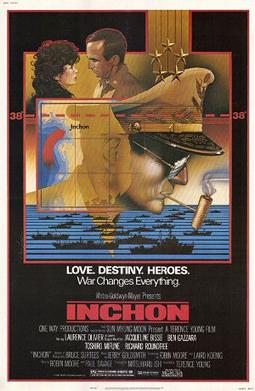
Inchon is a 1981 war film about the Battle of Inchon, considered to be the turning point of the Korean War. Directed by Terence Young and financed by Unification movement founder Sun Myung Moon, the film stars Laurence Olivier as General Douglas MacArthur, who led the United States' surprise amphibious landing at Incheon, South Korea in 1950, with Jacqueline Bisset, Ben Gazzara, Toshiro Mifune and Richard Roundtree.
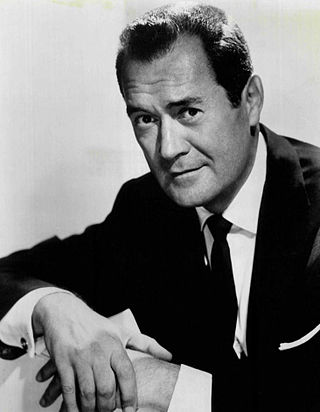
Frank Andrew Lovejoy Jr. was an American actor in radio, film, and television. He is perhaps best remembered for appearing in the film noir The Hitch-Hiker and for starring in the radio drama Night Beat.

2nd Battalion 5th Marines is an infantry battalion in the United States Marine Corps consisting of approximately 800 marines and sailors. They are based out of Marine Corps Base Camp Pendleton, California and fall under the command of the 5th Marine Regiment and the 1st Marine Division. The battalion has seen combat in World War I, World War II, the Korean War, the Vietnam War and the Gulf War and has deployed many times in support of Operation Iraqi Freedom and the War on Terror.
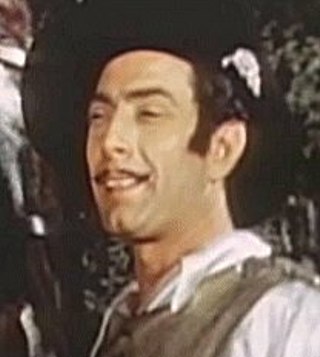
Nedrick Young, also known by the pseudonym Nathan E. Douglas, was an American actor and screenwriter often blacklisted during the 1950s and 1960s for refusing to confirm or deny membership of the Communist Party before the House Committee on Un-American Activities (HCUA). He is credited with writing the story for Jailhouse Rock in 1957, which starred Elvis Presley.

The 7th Marine Regiment is an infantry regiment of the United States Marine Corps based at Marine Corps Air Ground Combat Center Twentynine Palms, California. Nicknamed the "Magnificent Seventh", the regiment falls under the command of the 1st Marine Division and the I Marine Expeditionary Force.
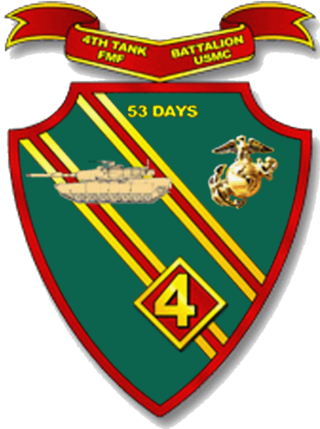
4th Tank Battalion was an armored battalion of the United States Marine Corps Reserve. Their primary weapon system was the M1A1 Abrams main battle tank and they were part of the 4th Marine Division and Marine Forces Reserve. The unit headquarters was at the Navy and Marine Corps Reserve Center San Diego, California, but other units in the battalion were located throughout the United States. Until the decision to divest the Marine Corps' armor capability, 4th Tank Battalion was the largest tank battalion in the US military with six lettered companies and an H&S Company.
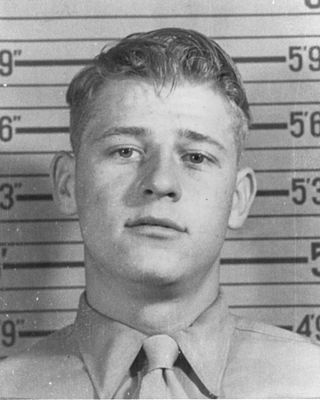
Walter Carleton Monegan Jr. was a United States Marine in the Korean War. On September 20, 1950, he was killed in action near Sosa-ri during the Battle of Inchon in South Korea. He was posthumously awarded the Medal of Honor for his actions above and beyond the call of duty on September 17 and 20, which helped to repulse a six-tank enemy attack on his battalion's position and then an overwhelming tank-infantry attack threatening to destroy his company at their position. He was killed after he proceeded to methodically knock out two of the three remaining enemy tanks at close range with his bazooka while under enemy fire.

One Minute to Zero is a 1952 American romantic war film starring Robert Mitchum and Ann Blyth, set during the opening phases of the Korean War, and produced by Howard Hughes as his last film as producer. Victor Young's score for the film includes the first appearance of "When I Fall in Love", as the instrumental titled "Theme from One Minute to Zero". The film showcases the contributions of the U.S. Army and U.S. Air Force, the South Korean Army, the United Nations, the British Army and the Royal Australian Air Force during the early days of the Korean War. The effects of air power in the Korean War were also vividly depicted through the use of combat footage.
United States Pictures was the name of the motion picture production company belonging to Milton Sperling who was Harry Warner's son-in-law.

To the Shores of Hell is a 1966 Vietnam War film shot in Technicolor and Techniscope that was directed by Will Zens and starring Marshall Thompson, Richard Arlen, Dick O'Neill and Robert Dornan that was distributed by Crown International Pictures. Dornan may possibly have co-written the film as his mother's maiden name was "McFadden".
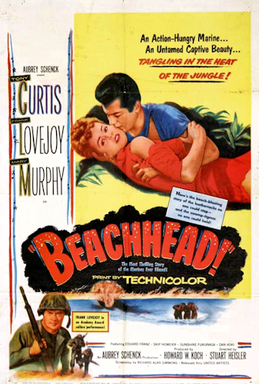
Beachhead! is a 1954 American Technicolor war film based on U.S. Marine Corps Captain Richard G. Hubler 1945 novel I've Got Mine about World War II. It was filmed on Kauai island in the Hawaiian Islands by Aubrey Schenck Productions, released through United Artists studio and directed by Stuart Heisler.

Marines, Let's Go is a 1961 CinemaScope DeLuxe Color Korean War film about three Marine buddies on shore leave in Japan and at war in Korea. It was produced and directed by Raoul Walsh, who also wrote the story. Walsh had previously had successes with films about the U.S. Marine Corps in World War I, the 1920s, and World War II. This was the next-to-last film of Walsh's long directing career.

Many films, books, and other media have depicted the 1950—53 Korean War. The TV series M*A*S*H is one well known example. The 1959 novel The Manchurian Candidate has twice been made into films. The 1982 film Inchon about the historic battle that occurred there in September 1950 was a financial and critical failure. By 2000 Hollywood alone had produced 91 feature films on the Korean War. Many films have also been produced in South Korea and other countries as well.

Hold Back the Night is a 1956 American war film about the Korean War based on the 1951 novel by Pat Frank, who had been a war correspondent in Korea. The film was directed by Allan Dwan; his third film with John Payne and his third film about the United States Marine Corps, the others being Abroad with Two Yanks (1944) and Sands of Iwo Jima (1949).

Henry Pierson Crowe was a Marine of World War I, the Banana Wars, World War II, and the Korean War.

















